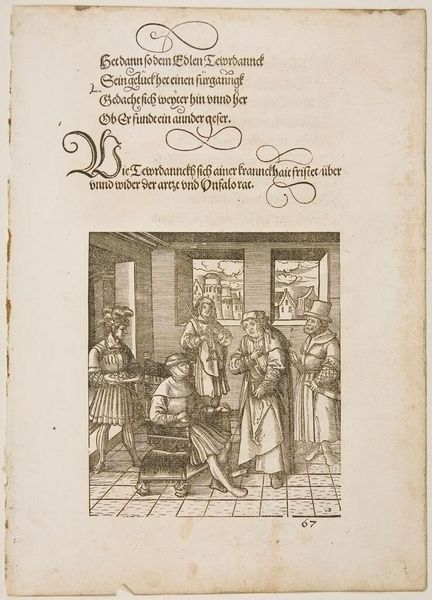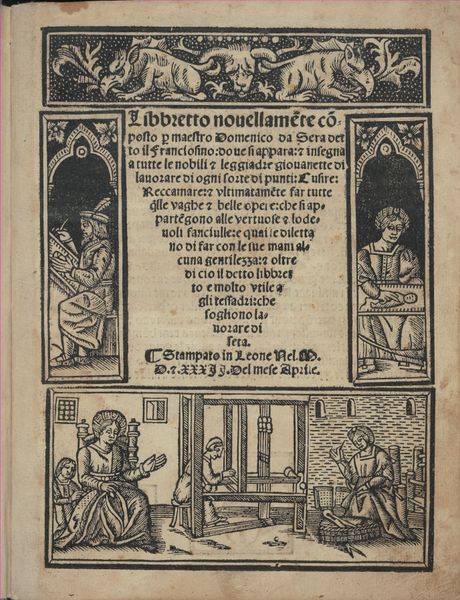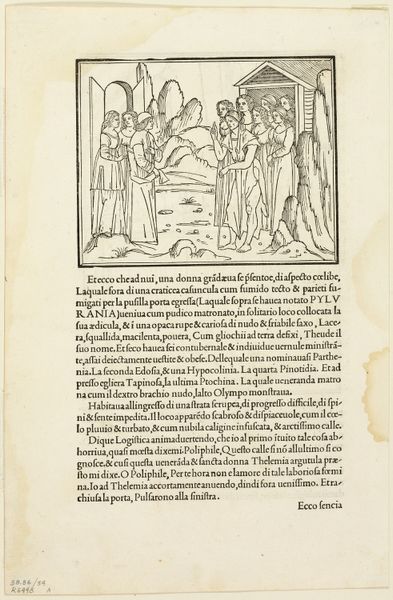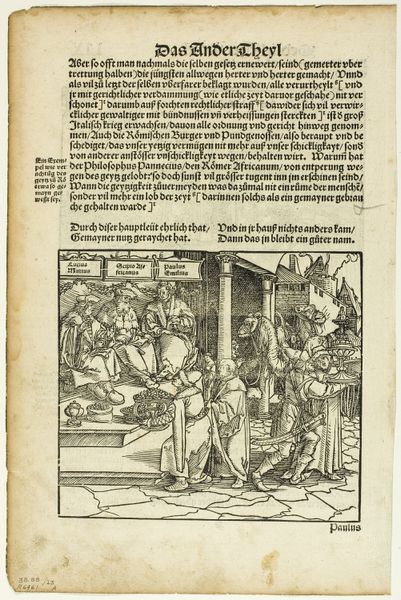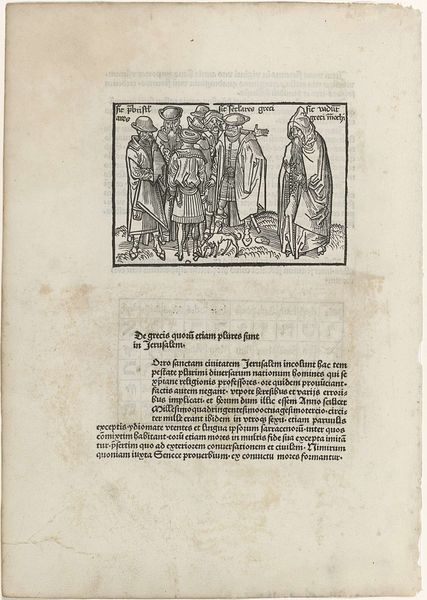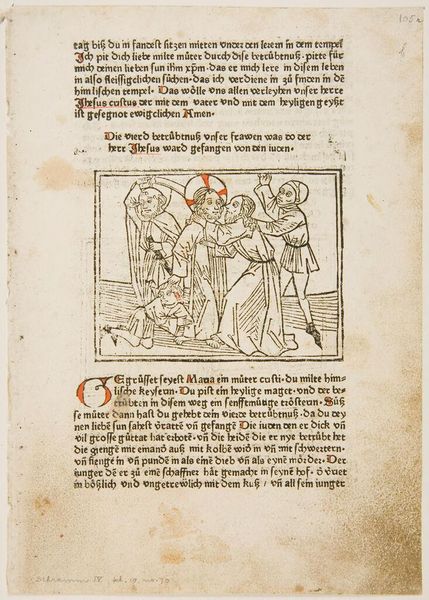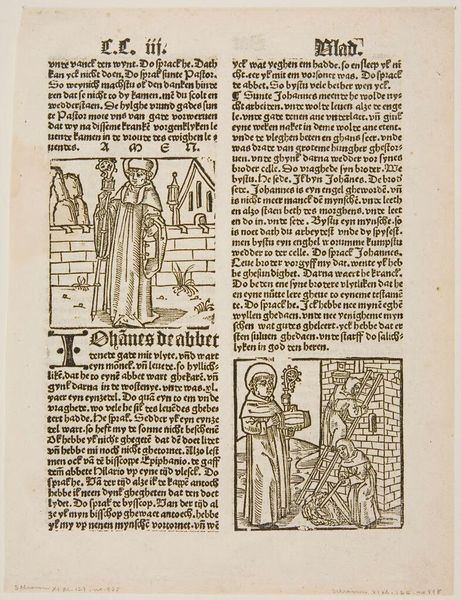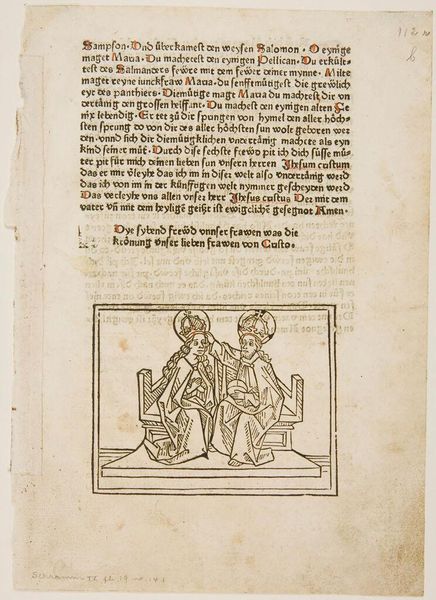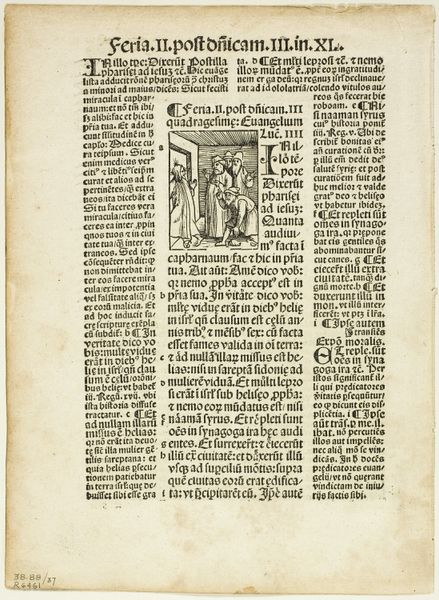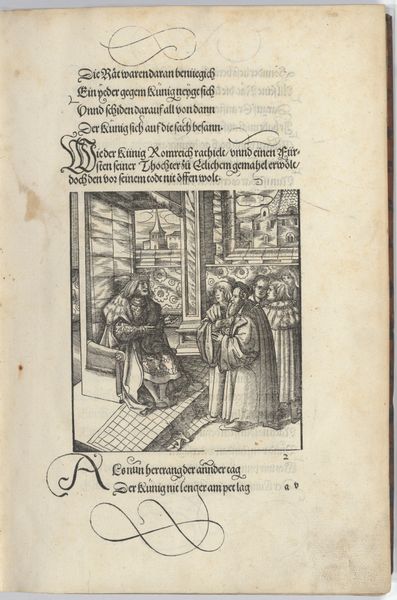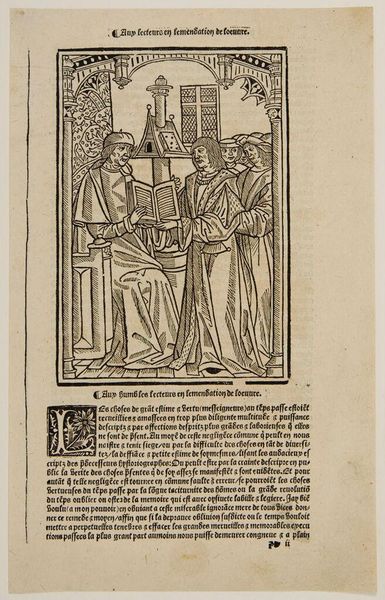
Saint Francis Heals the Grievous Wounds of One John at Lerida, plate two from Woodcuts from Books of the XVI Century c. 1512 - 1937
0:00
0:00
drawing, print, woodcut
#
drawing
#
medieval
#
narrative-art
# print
#
woodcut
Dimensions: 81 × 101 mm (image); 151 × 102 mm (image/text); 199 × 152 mm (sheet)
Copyright: Public Domain
Curator: What catches my eye immediately is the almost stage-like quality of this woodcut, all these figures compressed together like actors in a morality play. What do you see? Editor: There’s a raw emotional intensity that gets to me. It's so stark, so utterly without frills, that you are instantly plugged into the moment. And you really get a feeling of the collective vulnerability through the repetition of figures and architecture, but with that figure of the saint central and pulling our eye to him. Curator: Well, let’s orient our listeners. We’re looking at a work attributed to Hieronymus Höltzel titled, Saint Francis Heals the Grievous Wounds of One John at Lerida. The date is somewhat open, somewhere between 1512 and 1937. It's currently held at The Art Institute of Chicago. I find it so fascinating that this moment of extreme suffering is captured in a medium so immediate and graphic as a woodcut. Editor: Absolutely. Woodcuts often lend themselves to that directness. Thinking about the iconographic symbolism: Wounds are often used in artwork to suggest divine favor, the pain, even infection in this instance, marking John as someone receiving special attention from the divine through St. Francis. Curator: I also love how compressed the perspective is. We have these women stage left, looking with…concern? Revulsion? Hard to say. They seem unsure whether to look or not, while poor, wounded John seems utterly helpless, lying in a cramped bed at the right. I do admire the crisp delineation of textures too, whether it's the patient's matted hair or the heavy drapery of the saint's robe. Everything speaks to a kind of determined focus. Editor: Right, the line work emphasizes that tension between the terrestrial pain and implied transcendent, with those architectural elements boxing the people into something smaller. Curator: You know, what stays with me is the very human story being told here, even with its religious context. Suffering, faith, healing, doubt…it's all present. The medium almost magnifies it for me. Editor: Yes, the stark visual language distills that narrative power of belief, tradition, and of course, the symbolism of compassion and intervention. I keep coming back to those wounds as symbolic markers, reminding us that even pain can be a carrier of meaning.
Comments
No comments
Be the first to comment and join the conversation on the ultimate creative platform.
